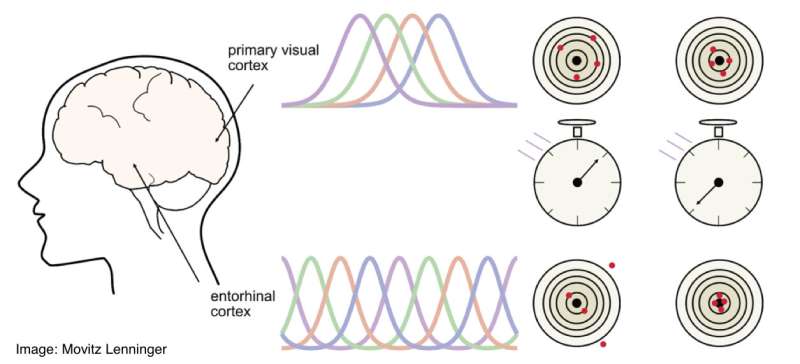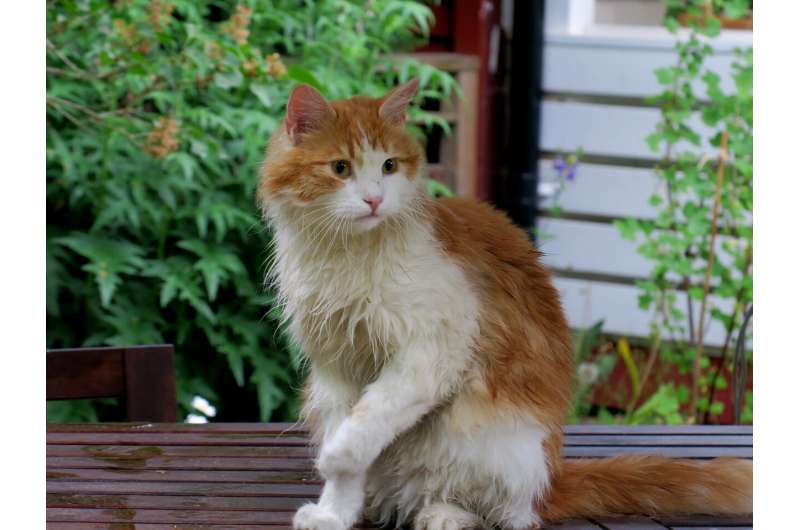This article has been reviewed according to Science X's editorial process and policies. Editors have highlighted the following attributes while ensuring the content's credibility:
fact-checked
peer-reviewed publication
trusted source
proofread
In initial sensory perception, neurons appear to favor speed over accuracy, study suggests

When an animal takes notice of an approaching figure, it needs to determine what it is, and quickly. In nature, competition and survival dictate that it's better to think fast—that is, for the brain to prioritize processing speed over accuracy. A new study shows that this survival principle may already be wired in the way the brain processes sensory information.
Kumar and fellow KTH neuroscientist Pawel Herman collaborated with KTH information theorists Movitz Lenninger and Mikael Skoglund to study input processing in the brain using information theory and computer models of the brain. Neuroscientist Arvind Kumar, an associate professor at KTH Royal Institute of Technology, says that the study offers a new view of neural coding of different types of inputs in the brain.
The new study surprisingly shows that initial visual processing is "quick but sloppy" in comparison to information processing in other parts of the brain's vast neural network, where accuracy is prioritized over speed. The paper is published in the journal eLife.
By studying simulations of input processing in the brain, the researchers found that neurons appear to favor speed over accuracy. Kumar cautions that the study did not focus on actual animal or human behavior, but the results are based on mathematical models of classical experimental data about how individual neurons response to inputs.
Their finding, he says, is a direct contradiction of the "efficient coding hypothesis" proposed by Horace Barlow in 1961, which holds that the brain tries to maximize information about the sensory inputs.

However, Kumar says, "We can be certain that our brains fight between speed and accuracy." In order to survive, animals must infer their sensory inputs rapidly. When an animal sees a pattern of lines in its visual inputs, it must not only extract the orientation of the lines but also do it quickly enough so as to run away in case it turns out to be a predator. "That is, the speed by which information can be extracted can sometimes be more important than the accuracy of the extracted information," he says.
But different parts of the brain have their own "coding strategies," Kumar says. In contrast to neuronal activity related to vision, neurons in the part of the brain that forms a representation of space—or a sense of where one is—seem to favor accuracy instead of speed.
The conclusions are drawn from analyzing "tuning curves" in simulated neuron networks. Similar in appearance to wave forms, these curves show the firing rate of neurons for specific features of stimulus, while curves in other parts of the brain are matched to different kinds of input.
The reason these shapes matter is that they show different kinds of activity. In the entorhinal cortex, a network hub for memory, navigation, and the perception of time, the curves have multiple peaks and they are more periodic. Lenninger says that these types of curves, suggest higher accuracy in decoding the input, albeit at slower speed unlike the single-peaked curves found in early sensory regions.
"Up to this point research has focused only on maximizing information, ignoring the fact that animals have finite time to respond to the inputs," Lenninger says. Now by taking the time factor into account, the study suggests that vital speed-accuracy trade-offs are already present in the wiring or tuning of neurons. The brain may not encode all types of information in the same way and with the same precision.
"It would seem that we can process sensory inputs quite fast with rather small errors," Kumar says. "But large errors are more likely if we try quickly to determine complex cognitive information associated with the sensory inputs—like memories associated with the input."
More information: Movitz Lenninger et al, Are single-peaked tuning curves tuned for speed rather than accuracy?, eLife (2023). DOI: 10.7554/eLife.84531





















